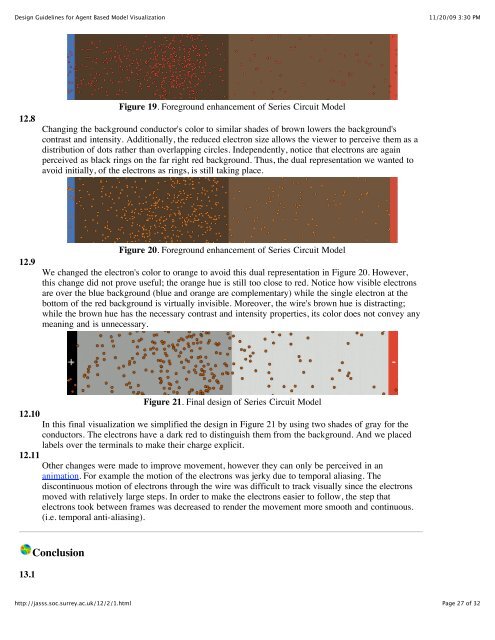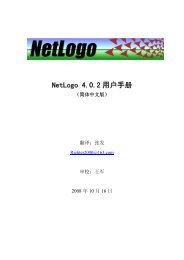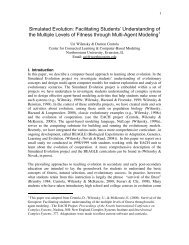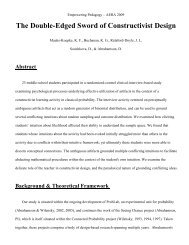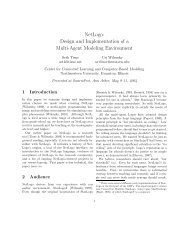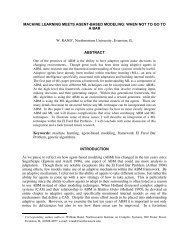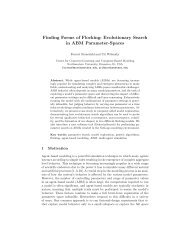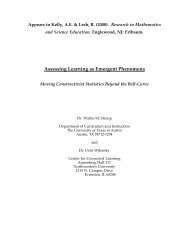Design Guidelines for Agent Based Model Visualization
Design Guidelines for Agent Based Model Visualization
Design Guidelines for Agent Based Model Visualization
Create successful ePaper yourself
Turn your PDF publications into a flip-book with our unique Google optimized e-Paper software.
<strong>Design</strong> <strong>Guidelines</strong> <strong>for</strong> <strong>Agent</strong> <strong>Based</strong> <strong>Model</strong> <strong>Visualization</strong><br />
12.8<br />
12.9<br />
http://jasss.soc.surrey.ac.uk/12/2/1.html<br />
Figure 19. Foreground enhancement of Series Circuit <strong>Model</strong><br />
Changing the background conductor's color to similar shades of brown lowers the background's<br />
contrast and intensity. Additionally, the reduced electron size allows the viewer to perceive them as a<br />
distribution of dots rather than overlapping circles. Independently, notice that electrons are again<br />
perceived as black rings on the far right red background. Thus, the dual representation we wanted to<br />
avoid initially, of the electrons as rings, is still taking place.<br />
Figure 20. Foreground enhancement of Series Circuit <strong>Model</strong><br />
We changed the electron's color to orange to avoid this dual representation in Figure 20. However,<br />
this change did not prove useful; the orange hue is still too close to red. Notice how visible electrons<br />
are over the blue background (blue and orange are complementary) while the single electron at the<br />
bottom of the red background is virtually invisible. Moreover, the wire's brown hue is distracting;<br />
while the brown hue has the necessary contrast and intensity properties, its color does not convey any<br />
meaning and is unnecessary.<br />
Figure 21. Final design of Series Circuit <strong>Model</strong><br />
12.10<br />
In this final visualization we simplified the design in Figure 21 by using two shades of gray <strong>for</strong> the<br />
conductors. The electrons have a dark red to distinguish them from the background. And we placed<br />
labels over the terminals to make their charge explicit.<br />
12.11<br />
Other changes were made to improve movement, however they can only be perceived in an<br />
animation. For example the motion of the electrons was jerky due to temporal aliasing. The<br />
discontinuous motion of electrons through the wire was difficult to track visually since the electrons<br />
moved with relatively large steps. In order to make the electrons easier to follow, the step that<br />
electrons took between frames was decreased to render the movement more smooth and continuous.<br />
(i.e. temporal anti-aliasing).<br />
13.1<br />
Conclusion<br />
11/20/09 3:30 PM<br />
Page 27 of 32


